4. Monitor

Monitoring includes:
- Re-assess
- Review
- Progress
- Refer.
For more information on monitoring, see the introduction to rehabilitation module.
Re-assessing difficulties
Review the person’s motor function and mobility at every appointment and compare it with previous results.
Meet Jensen
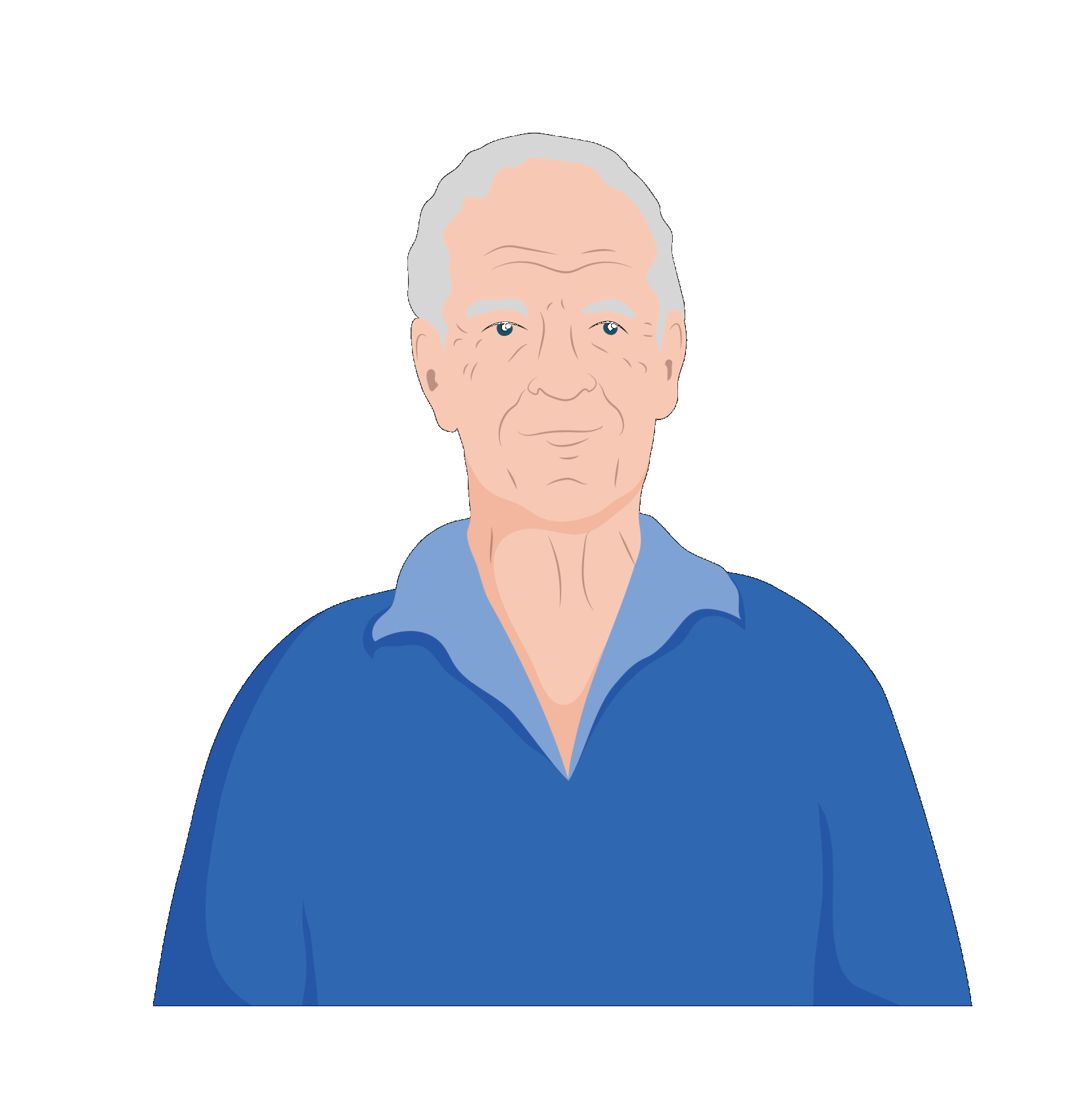
Jensen is 60 years old. He has diabetes and sometimes feels off balance when he is walking.
After visiting his health service, he was given some gait training exercises, advised on how to maintain his balance and provided with a tripod walking stick to give him extra support, particularly when he is in his garden.
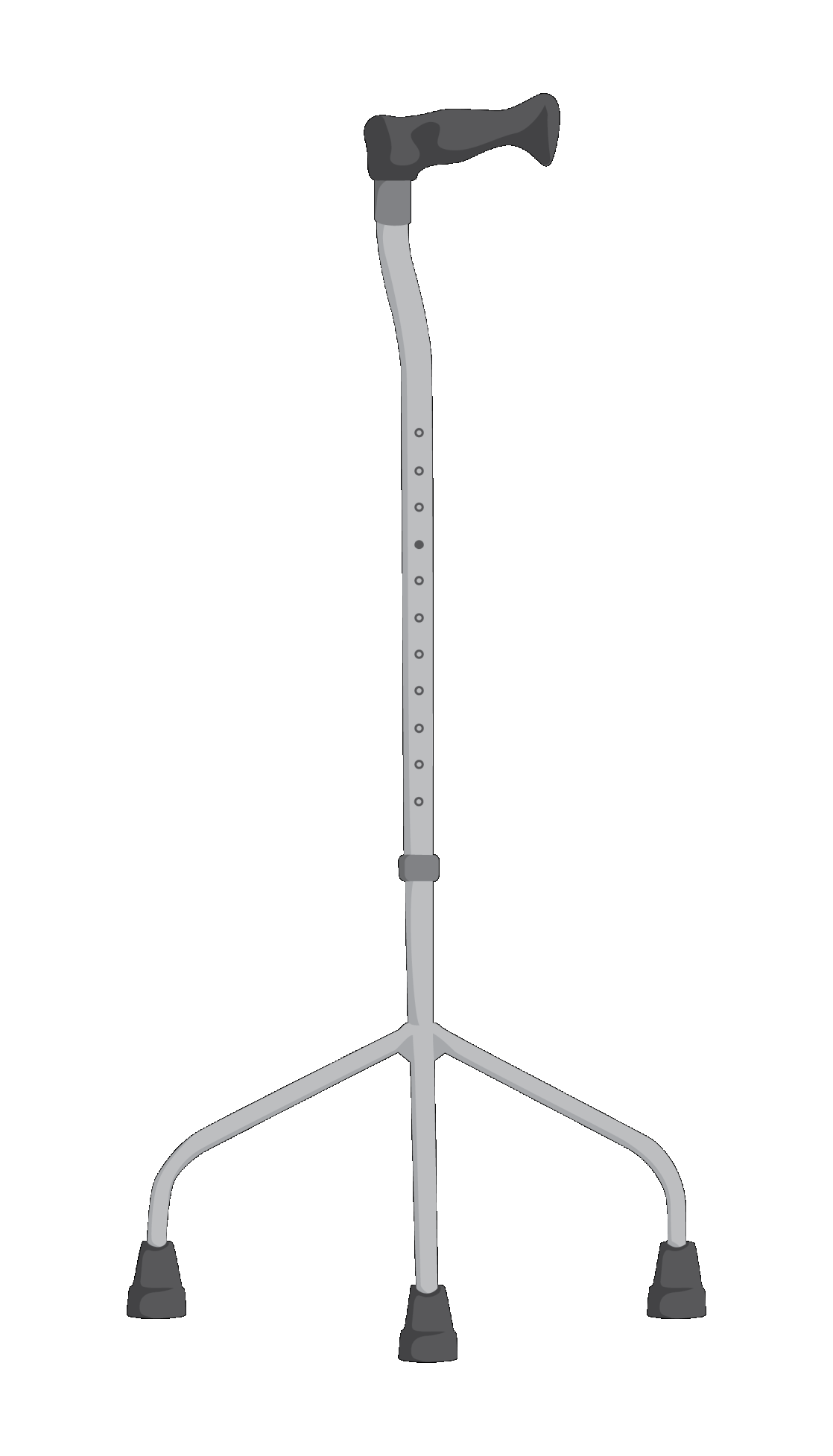
He liked the support it gave him inside his house but he felt unstable when he tried to use it in his garden. He decided a single point walking stick would suit him better.

Reviewing the rehabilitation care provided
Working with the person and their family, to ensure they are completing their mobility and/or motor function program correctly.
Remember Aida?
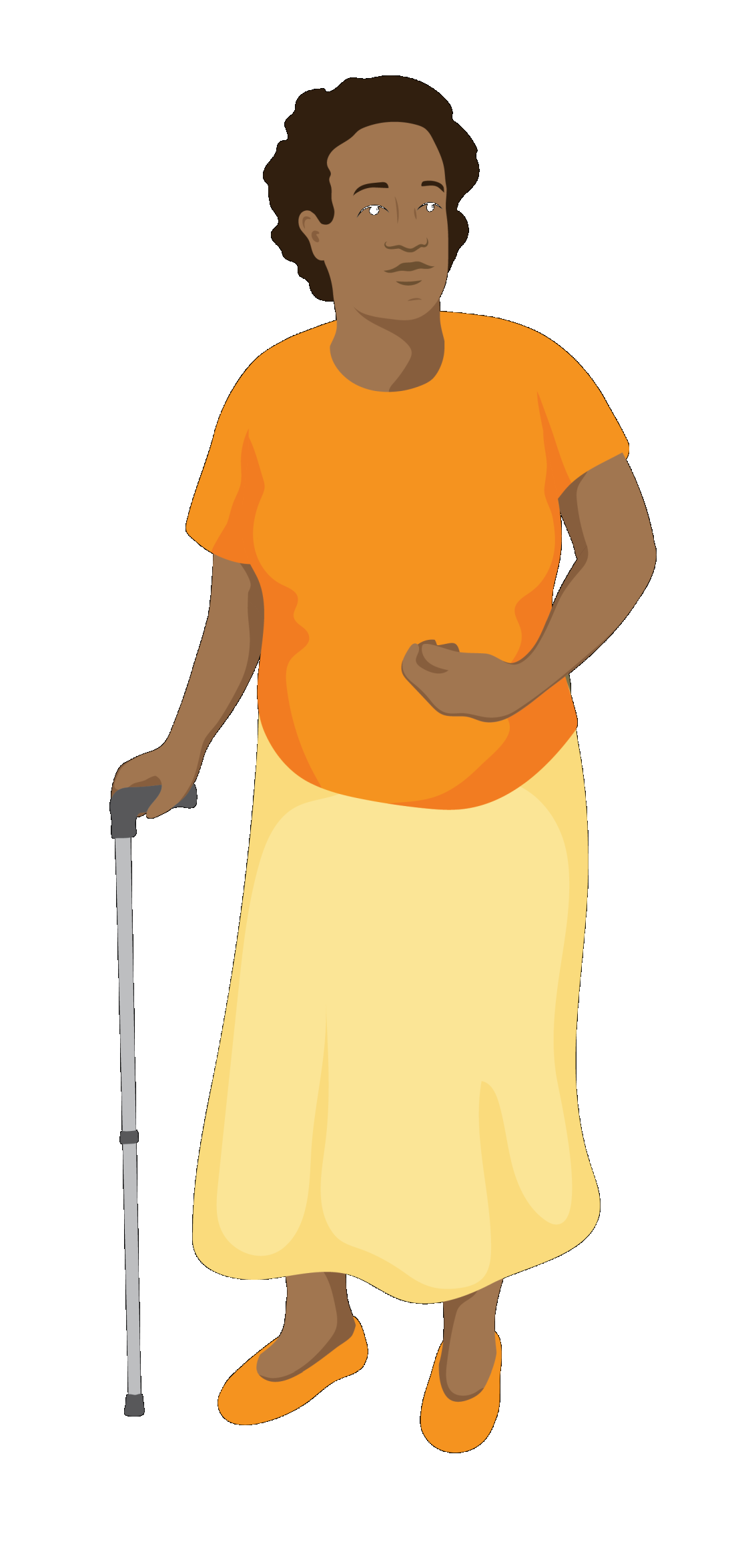
Aida has had a stroke. This has caused weakness on the left side of her body.
Aida’s left hand and wrist has become painful, and she is having difficulty opening her hand.
Aida and her daughter spoke with a doctor who taught them how to massage Aida’s hand and wrist and how to gently stretch her fingers.
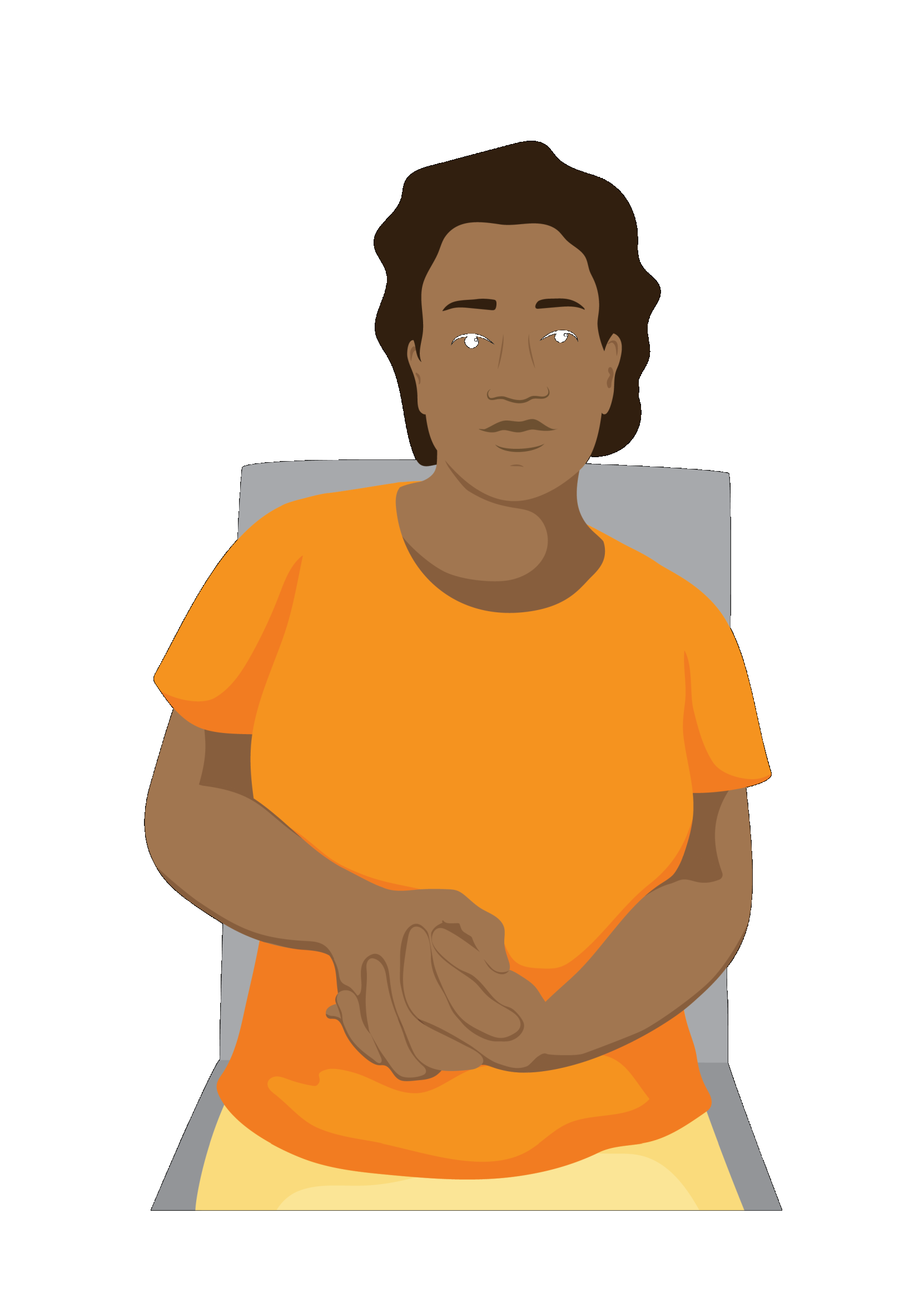
During
a monitoring appointment, Aida’s doctor asked her to demonstrate the stretches,
and noticed she was over-stretching her wrist. They worked together to practice
the correct technique, which will prevent injury to Aida’s wrist
Progressing rehabilitation care
Working with each person, and their family if appropriate, to progress their rehabilitation care.Meet Sachin
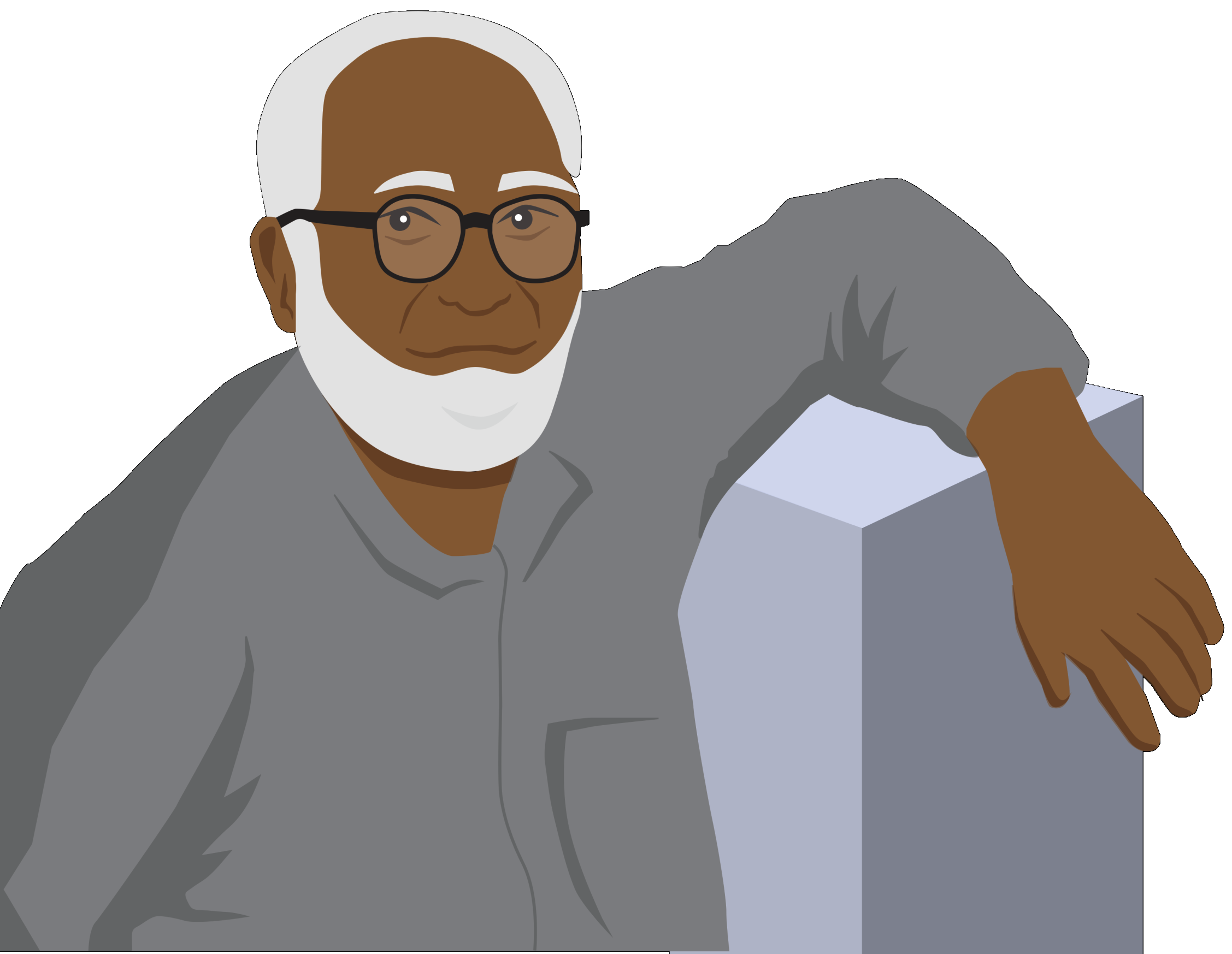
Sachin is 52 years old. He lives with his partner and has two grown up sons and one grown up daughter. After many years working at the sawmill, Sachin developed chronic obstructive pulmonary disease (COPD).
After the sawmill Sachin started working at his son’s fruit and vegetable store. Over time Sachin experienced increasing shortness of breath and fatigue. As a result, Sachin had to reduce his working hours.
Six months ago, Sachin and his son, Solomon, visited a doctor who taught them strengthening exercises to do at home.
Since doing the muscle strengthening exercises, Sachin started feeling less short of breath and fatigued.
On re-assessment, Sachin’s strength had improved. His doctor has encouraged him to continue with his exercises, progressing them to be more suitable for his increased strength.
Sachin has been able to slightly increase his working hours at his son’s store. This makes him very happy.
Referral
Well-functioning referral networks helps a person to access the services they need.
During screening, assessment, planning, delivering or monitoring rehabilitation interventions, health professionals may identify the need for a referral to:
- Specialist health services: For people with acute or complex health needs.
- Rehabilitation services: Including physical therapists, occupational therapists, rehabilitation physicians, orthotists and prosthetists, speech pathology, dietitians or rehabilitation nurses.
Meet Firoz
![]()
Firoz is 9 years old, and has cerebral palsy. He uses a wheelchair with extra postural support for his mobility.
Firoz sometimes coughs when he is eating and drinking. His mother sits with him during all meals, to make sure he can eat safely.
Firoz and his mother visits his community health clinic because has a chest infection.
Firoz’s mother and health worker talk about the difficulties he has while eating and drinking. The health care worker is concerned that Firoz may be breathing in some of his food and drink, into his lungs, resulting in chest infections.
With Firoz and his mother’s permission, the health care worker refers him for a swallowing assessment at a rehabilitation service.